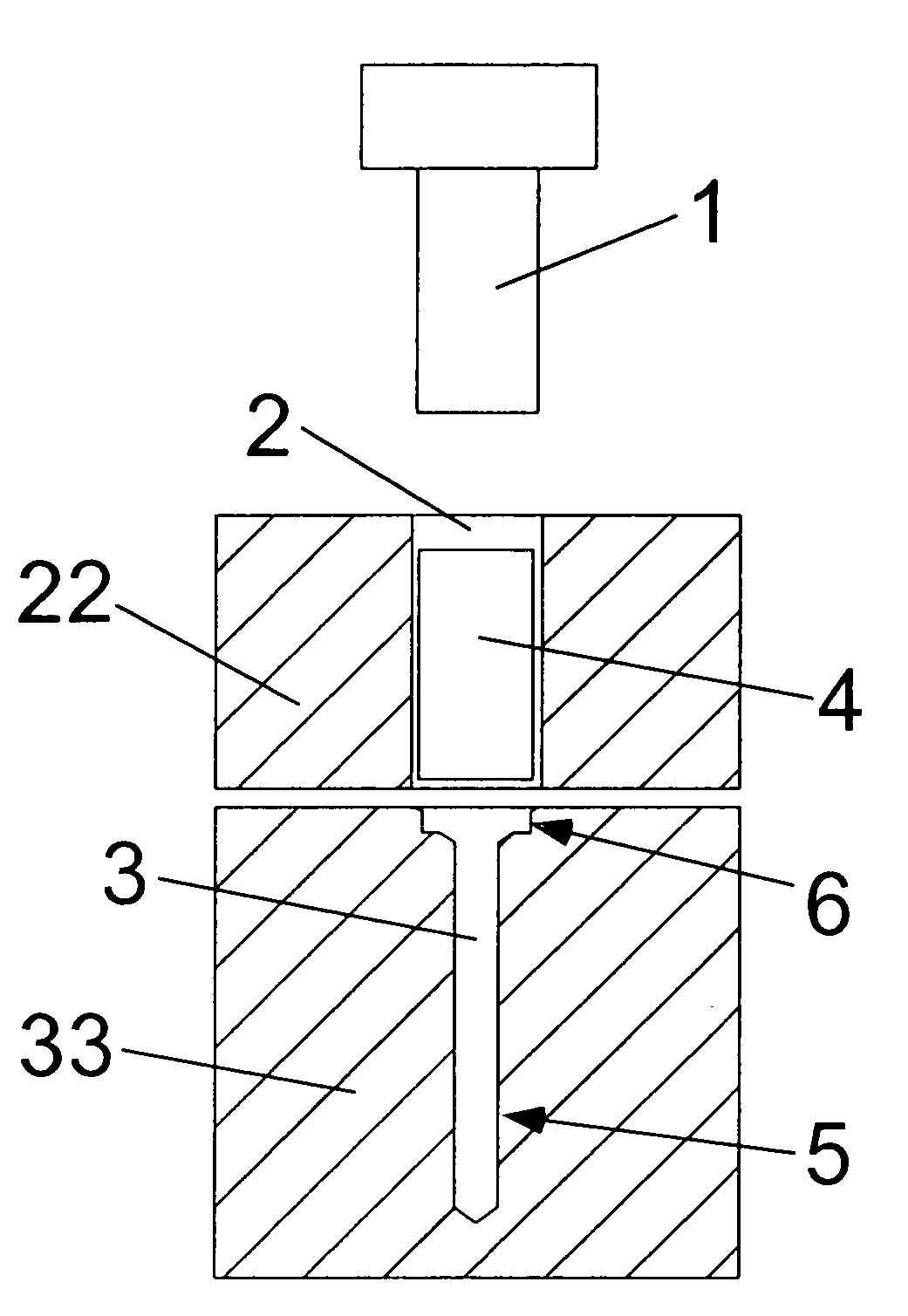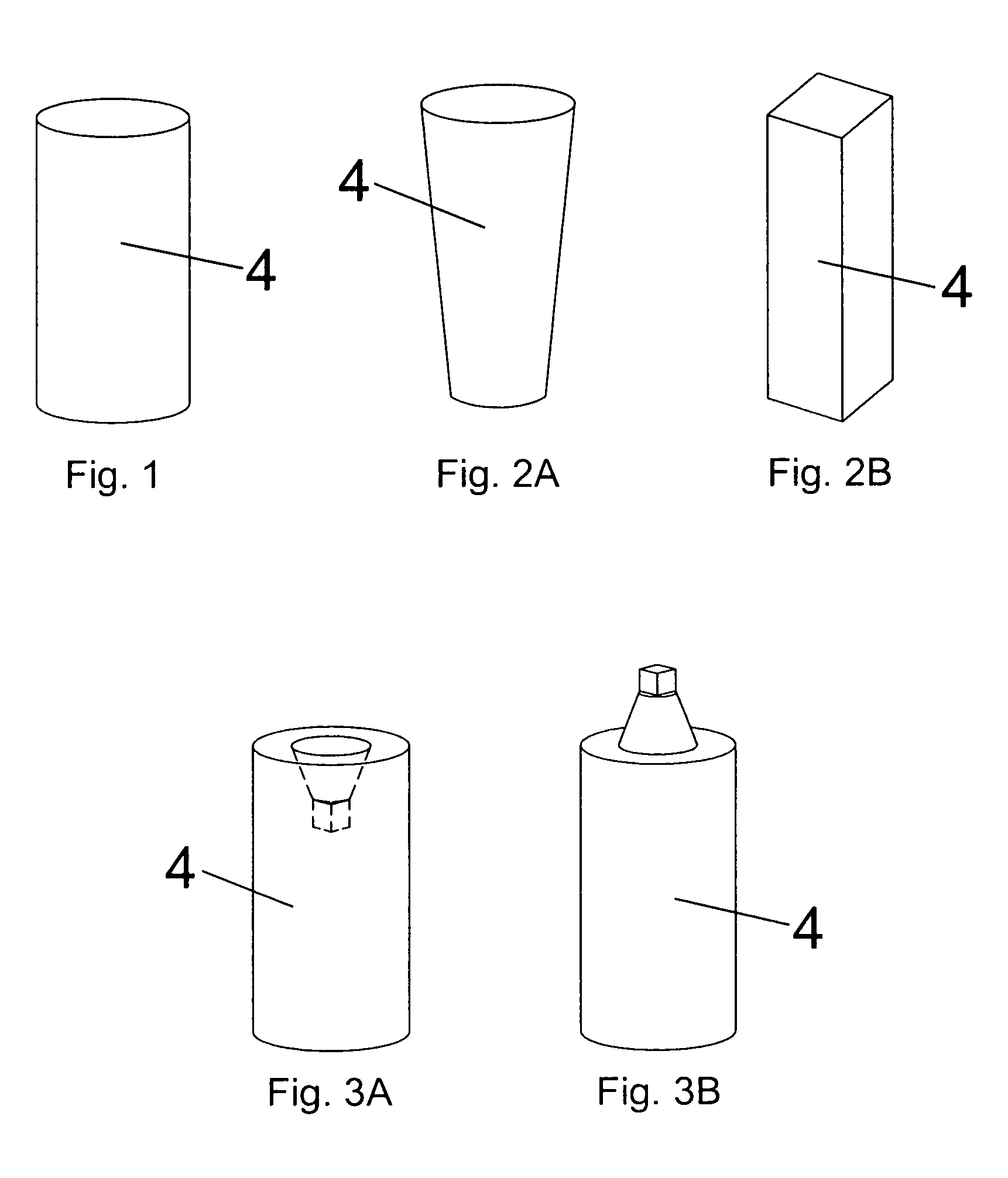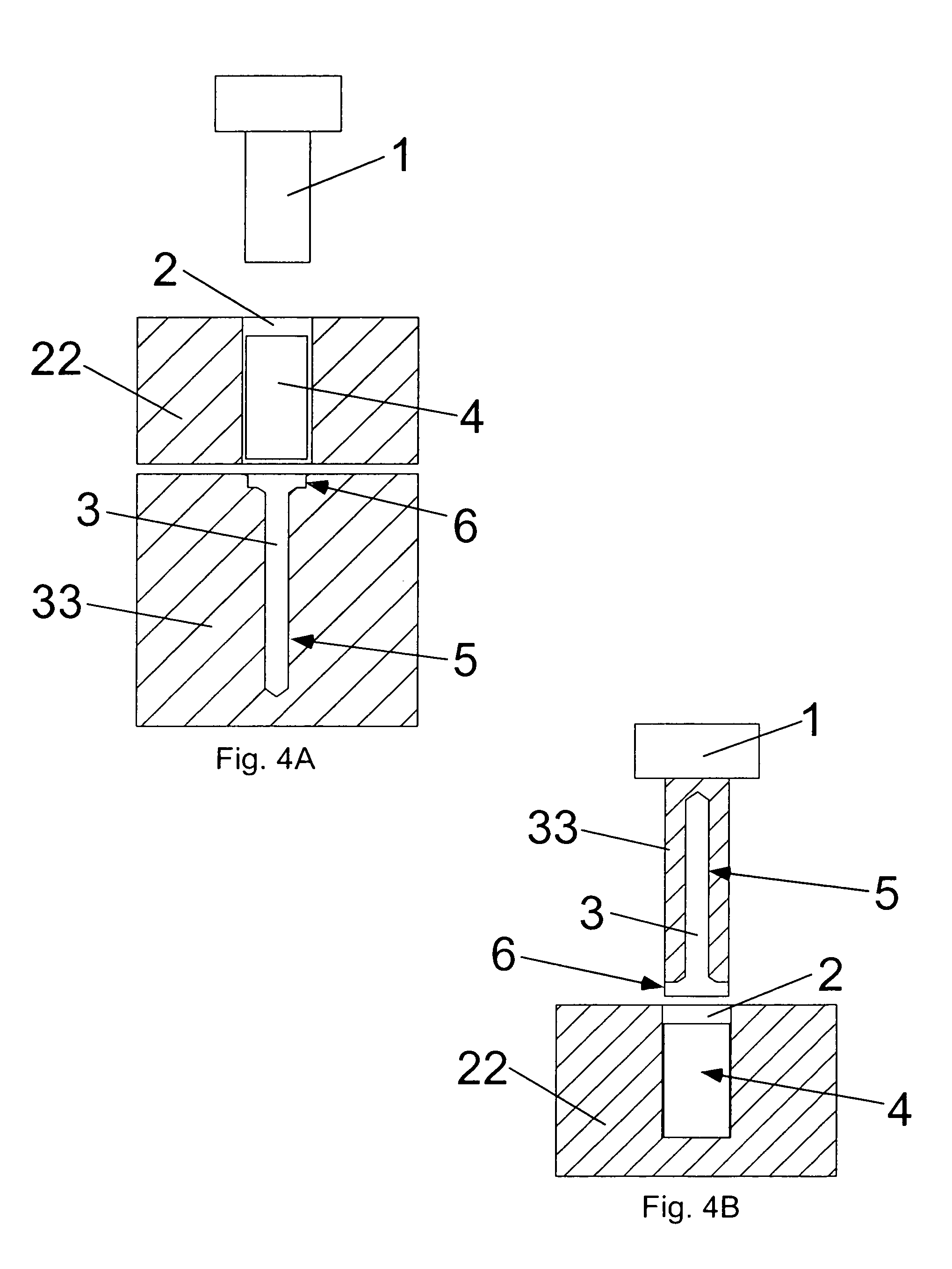Oriented polymer implantable device and process for making same
a polymer implantable device and polymer technology, applied in the field of medical implant devices, can solve the problems of high waste of raw materials, and high waste of raw materials, and achieve the effect of high degree of polymer orientation and high strength
- Summary
- Abstract
- Description
- Claims
- Application Information
AI Technical Summary
Benefits of technology
Problems solved by technology
Method used
Image
Examples
Embodiment Construction
[0035]The present invention consists of a method for producing a surgical polymer implant, such as a tissue fixation device, or a bone fixation or treating device. The implant may be formed in any shape suitable for implantation into the living being and may be fastened into or onto tissue or bone (e.g. a screw, pin, rod, nail, plate, staple, suture anchor or in the form of a similar type fastener or related component.) In the preferred embodiment, the bone treating device or implant processed through the method described in the present invention consists of a bioabsorbable polymeric material or matrix. In an alternative embodiment, the polymeric material of the implant may be non-resorbable. The polymer may feature a semi-crystalline, crystalline or amorphous structure. A semi-crystalline or crystalline structure polymer material features an arrangement of the polymer molecules in three-dimensional spherulitic structures and may further feature lamellae, a folded crystalline struct...
PUM
| Property | Measurement | Unit |
|---|---|---|
| resorbable | aaaaa | aaaaa |
| non-resorbable | aaaaa | aaaaa |
| molecular structure | aaaaa | aaaaa |
Abstract
Description
Claims
Application Information
 Login to View More
Login to View More - R&D
- Intellectual Property
- Life Sciences
- Materials
- Tech Scout
- Unparalleled Data Quality
- Higher Quality Content
- 60% Fewer Hallucinations
Browse by: Latest US Patents, China's latest patents, Technical Efficacy Thesaurus, Application Domain, Technology Topic, Popular Technical Reports.
© 2025 PatSnap. All rights reserved.Legal|Privacy policy|Modern Slavery Act Transparency Statement|Sitemap|About US| Contact US: help@patsnap.com



